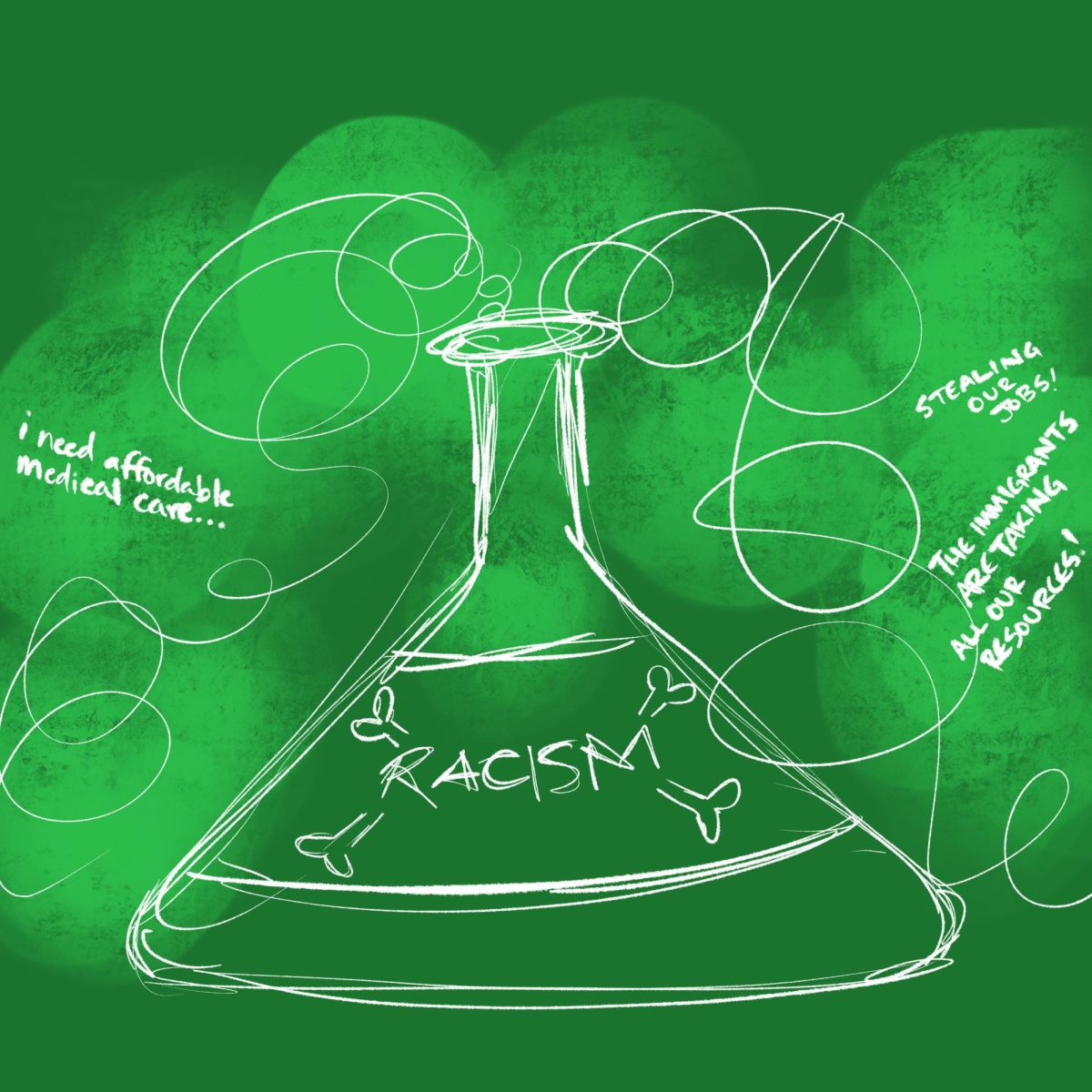Neverman: Racism rages on
January 9, 2011
Over winter recess in Central Pennsylvania I attended a Festivus Party, one celebrating the… Over winter recess in Central Pennsylvania I attended a Festivus Party, one celebrating the secular winter holiday popularized by a 1997 “Seinfeld” episode. At one point in the night I was standing among five or six middle-aged men when the topic of Kanye West came up.
“Dick,” “jackass” and “idiot” were the three adjectives thrown around before I asked if I heard old men talking about something they knew they didn’t understand. These men surely had no clue that Kanye had just dropped arguably the best album of the year, My Beautiful Dark Twisted Fantasy. Thus they had to have been talking about his much-publicized antics, and even then, they were still probably out of touch.
The conversation continued as I asserted that Kanye was correct when he said, “George Bush doesn’t care about black people.” As could be expected, every type of insult imaginable was hurled my way — all because a few old men refuse to accept our country for what it is — racist.
Kanye might as well have said, “White people don’t care about black people,” because it’s just as true.
People just don’t care. They would much rather live in their little bubble — pretending that it didn’t take three days to get substantial aid to people in New Orleans after Hurricane Katrina and that even when aid arrived, it was insufficient, inadequate and misappropriated. They would like to pretend that there isn’t another side to the “American Dream” in which more than 40 million people, black and white, live beneath the poverty line, while billionaires run around the country manipulating the government, pressing to ensure that the gap between rich and poor continues to grow and the middle class continues to stagnate.
To see this type of racism you needn’t look past our very own city of Pittsburgh, a beautiful place indeed but full of neighborhoods lacking in racial diversity. Take Penn Avenue, one of the longest streets in the city, and without a doubt one of the most polarizing. It splits Garfield and Friendship and further, Homewood and Point Breeze. According to the most recent Census data, Point Breeze is 83.8 percent white whereas Homewood is 98.3 percent black. Garfield is 72.4 percent black whereas Friendship is 59.6 percent white. Can you think of a starker contrast between neighborhoods? I can’t.
Have you ever been to a bar or club with a “dress code” that includes “no baggy clothes, sneakers or fitteds”? If the answer is yes, you’ve witnessed the fruits of institutionalized racism. John Teleha — manager of Bar Room, SteelHouse and Saddle Ridge in Station Square — recently commented on the dress code to City Paper saying, “You want to have a certain image in there. You want everybody to look nice … have a good time, but don’t look like a bum.” This is a prudent position to take when dealing with something as sensitive as race, but it seems that the dress codes of these establishments specifically target fashion popular with the young urban constituency — one that is still perceived as dangerous and undesirable.
The story of Jordan Miles, a black high school honors student from Homewood, illustrates this point poignantly. Last January, three plain-clothes officers jumped from an unmarked vehicle and confronted him while he was walking to his grandmother’s house — the confrontation ended with Miles being severely beaten. According to an interview between Miles and the Pittsburgh Post-Gazette, the officers, who allegedly failed to identify themselves as such, approached him and shouted, “Where’s the money? Where’s the gun? Where’s the drugs?” If those questions don’t scream racial profiling I don’t know what does. It seems as if we live in a city where many assume that every young, black man is a blemish on society.
We’ve all heard of crack, what it did to the inner cities and how it changed the “game” forever, but how many people know about how it changed the demographics of America’s jails? The fact is since a 1986 law, the Anti-Drug Abuse Act, went into effect, the sentencing for distributing one gram of crack cocaine is just as severe as distributing 100 grams of powder – an arbitrary, 100-to-1 disparity. As simple possession of crack now carries mandatory jail time, the black population in American jails has quadrupled, according to a study by the Justice Policy Institute.. So is it surprising that, according to The New York Times, in 2006 82 percent of those sentenced under federal crack cocaine laws were black?
What’s even less surprising is the ease with which white men in powerful positions, like those in Congress, can enact changes that are aimed at continually ravaging the poor black population in America. When you look at politicians, who elects them and who finances their campaigns, the voice of those disenfranchised blacks is nowhere to be found. Even black leaders like Al Sharpton and Jesse Jackson are nothing more than talking heads bought and paid for by the Establishment.
Contrary to a popular notion, the election of Barack Obama didn’t disintegrate the “remnants” of racism in America. We, in fact, do not live in a post-racist utopia where everyone is afforded an equal chance at success. What we did find out is that we have many, many battles ahead before we can look in the mirror collectively as a nation and be proud of what we see. These are things that should be relics of the past, but in fact they permeate on a daily basis across the country and their continued existence is one of the driving forces behind the continual degradation of the black population within American cities.
E-mail Chris at [email protected].


